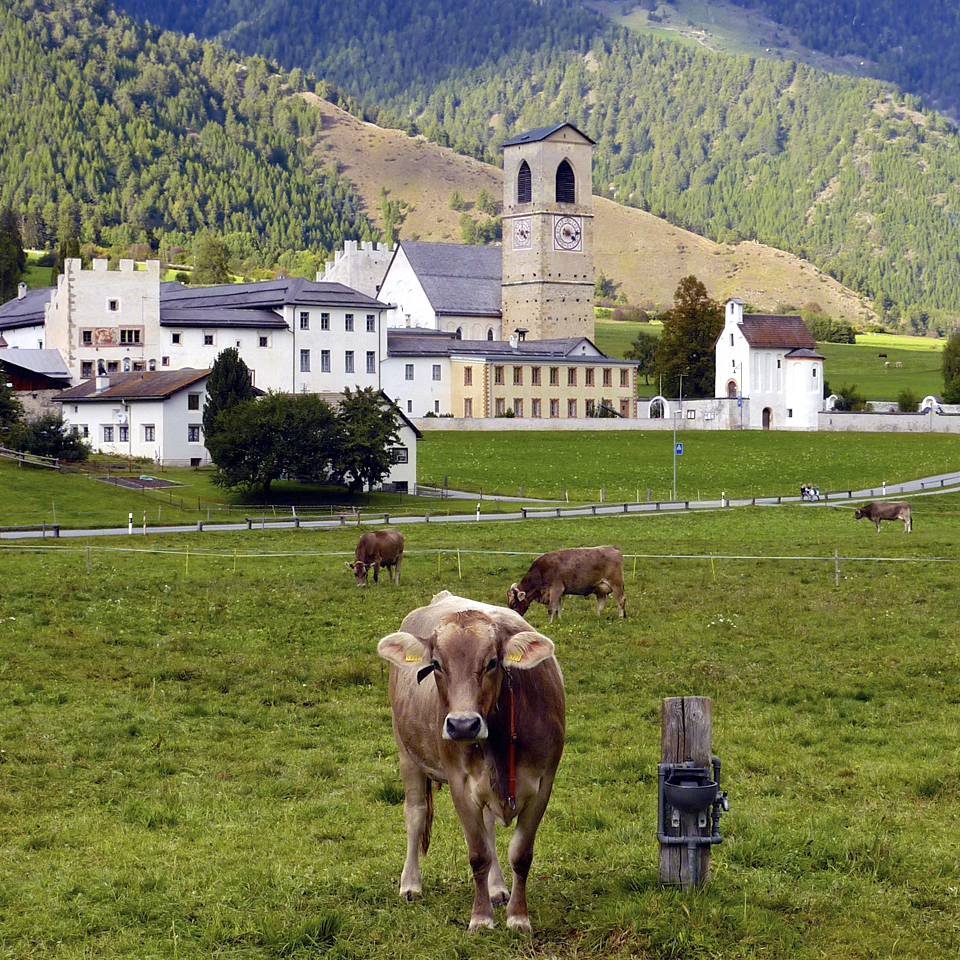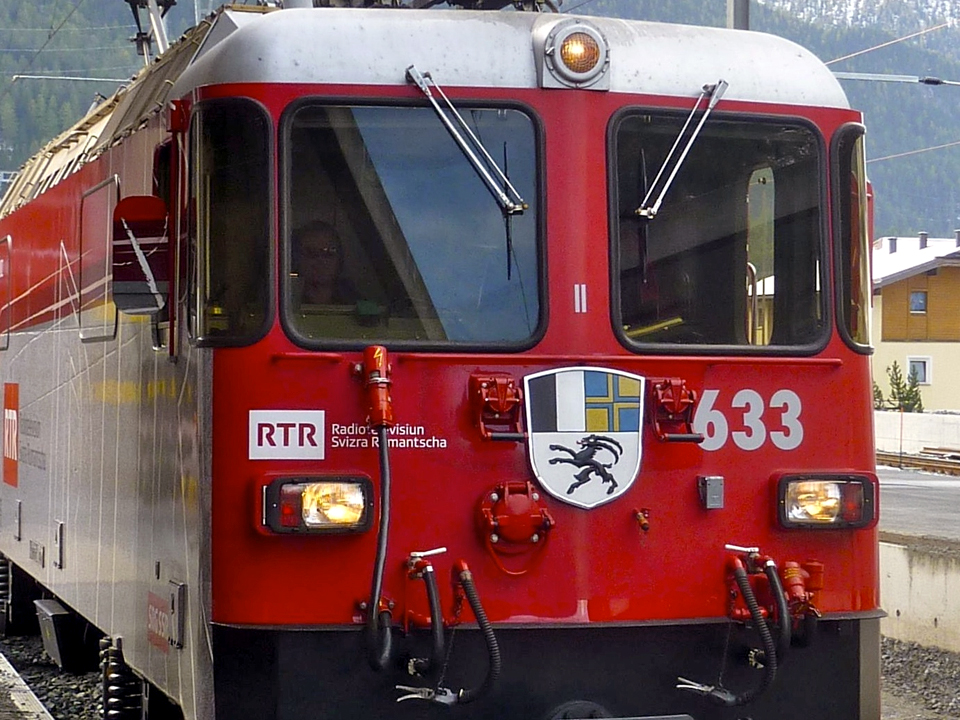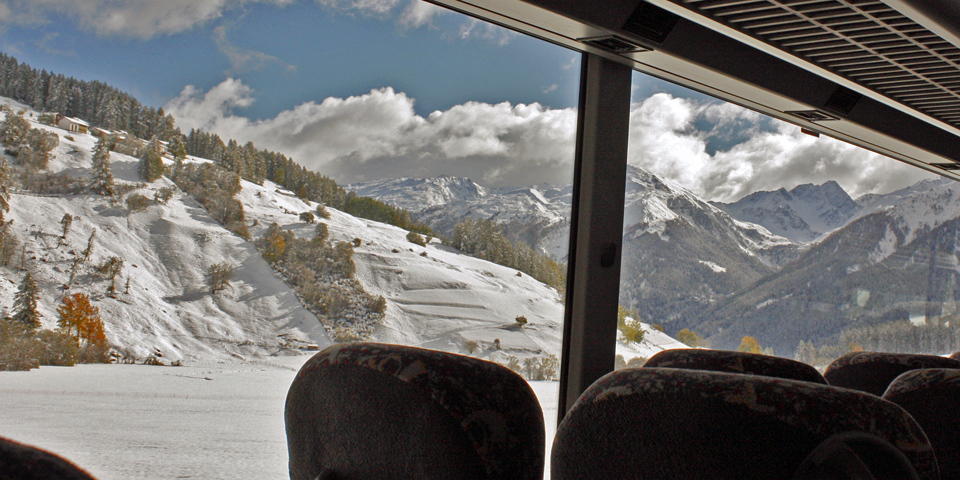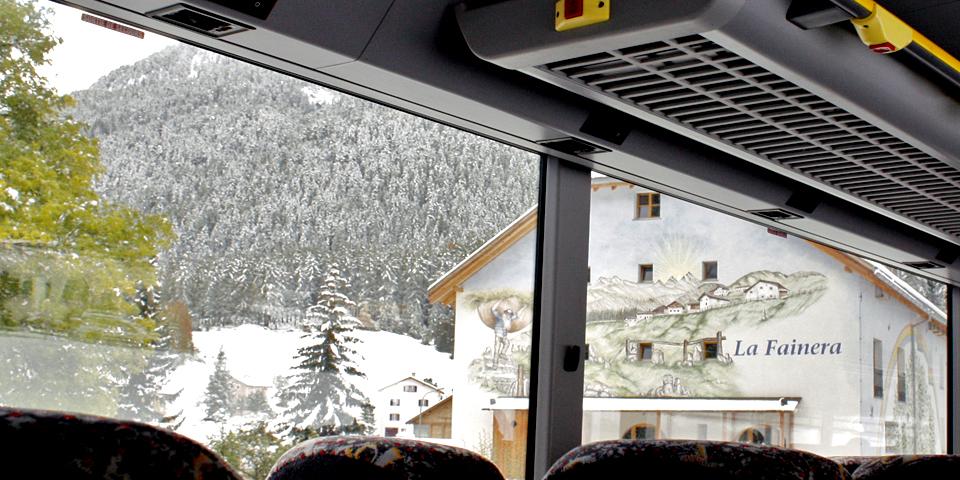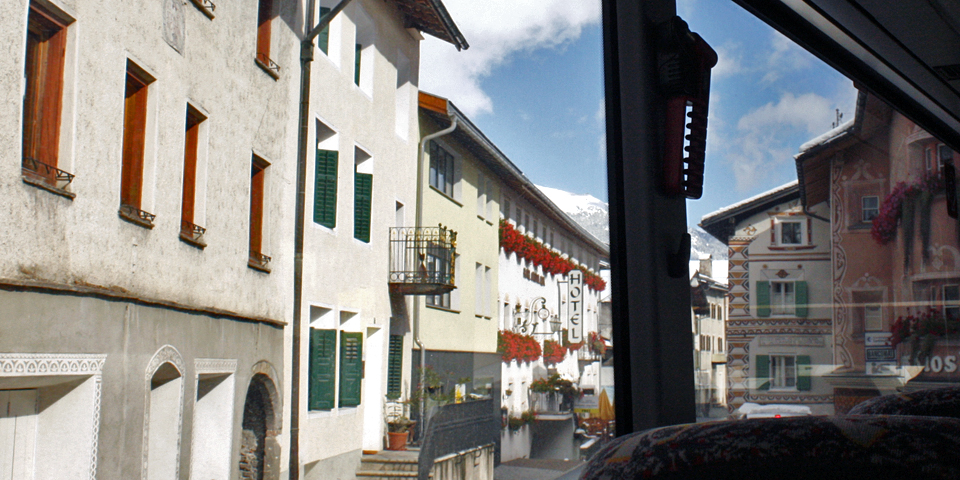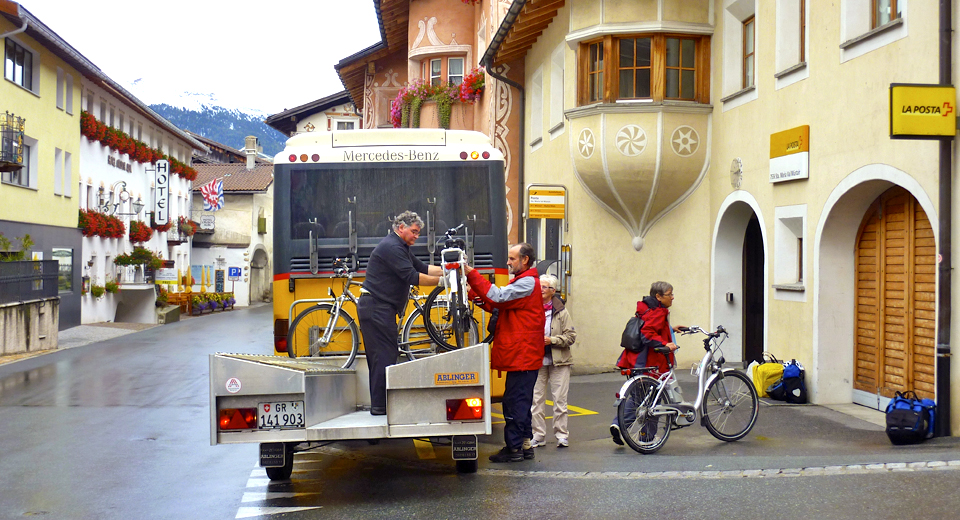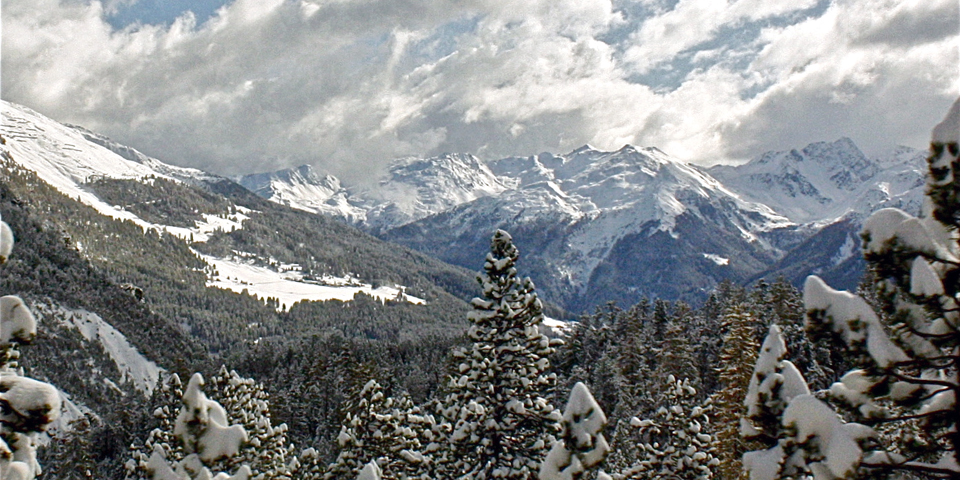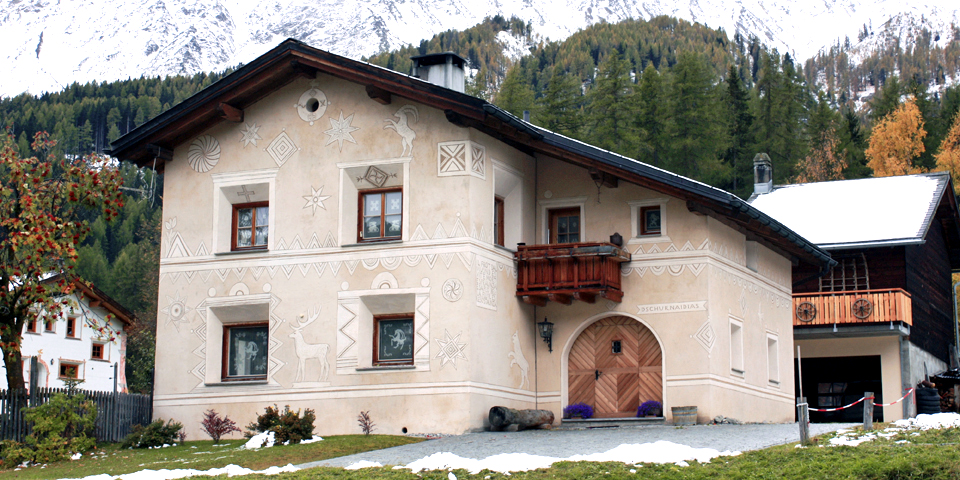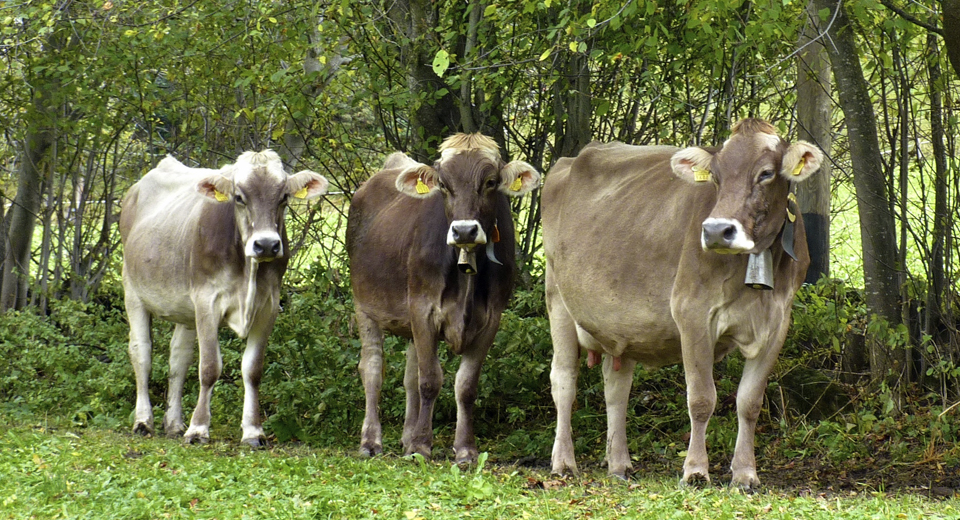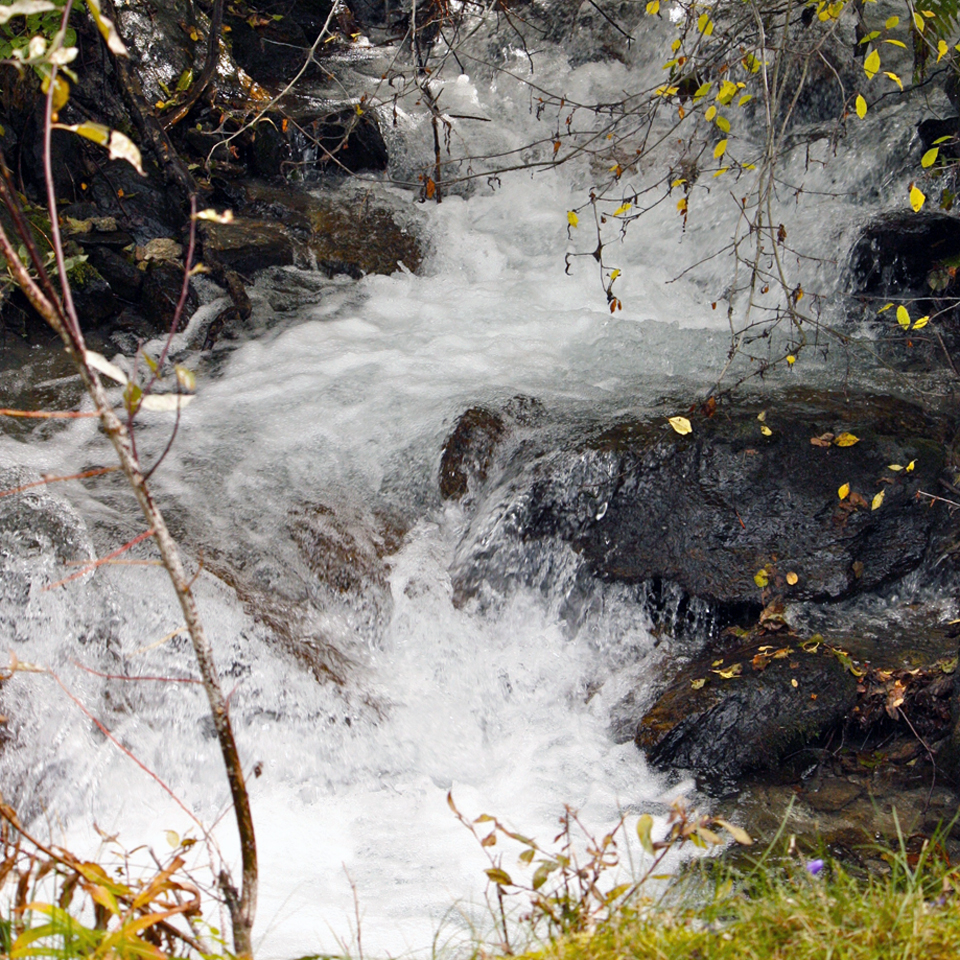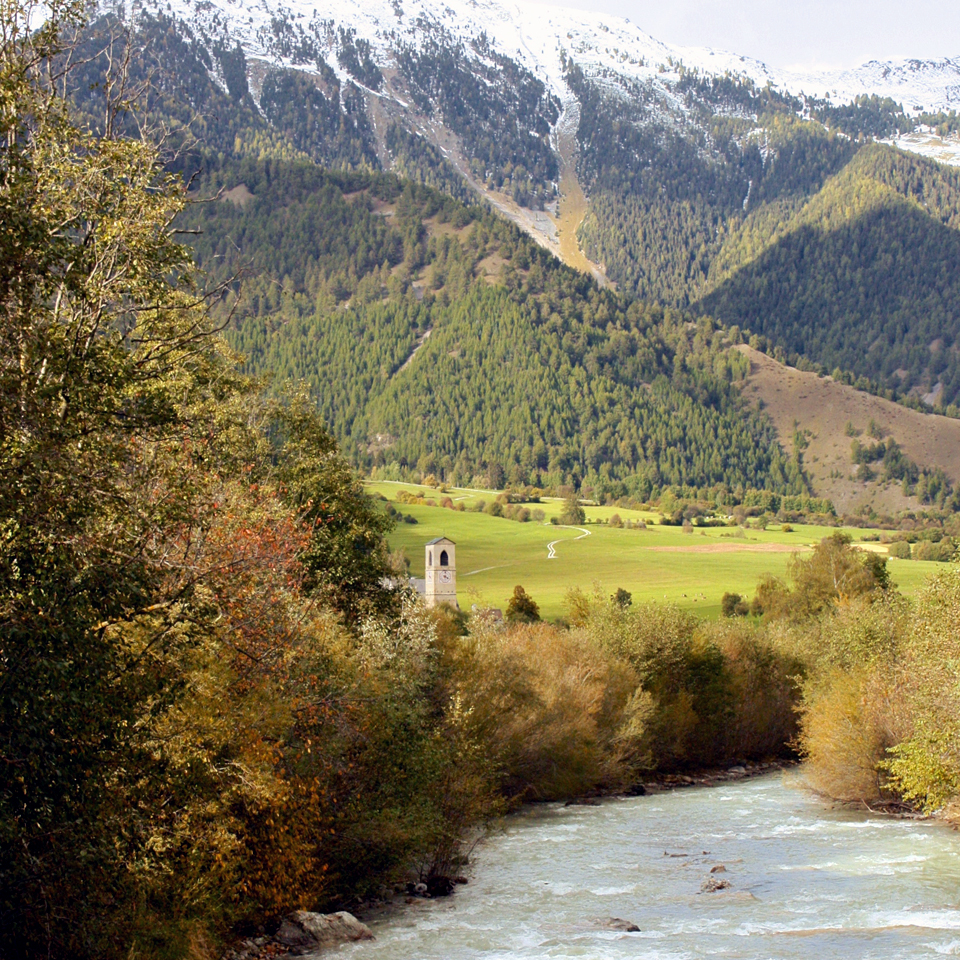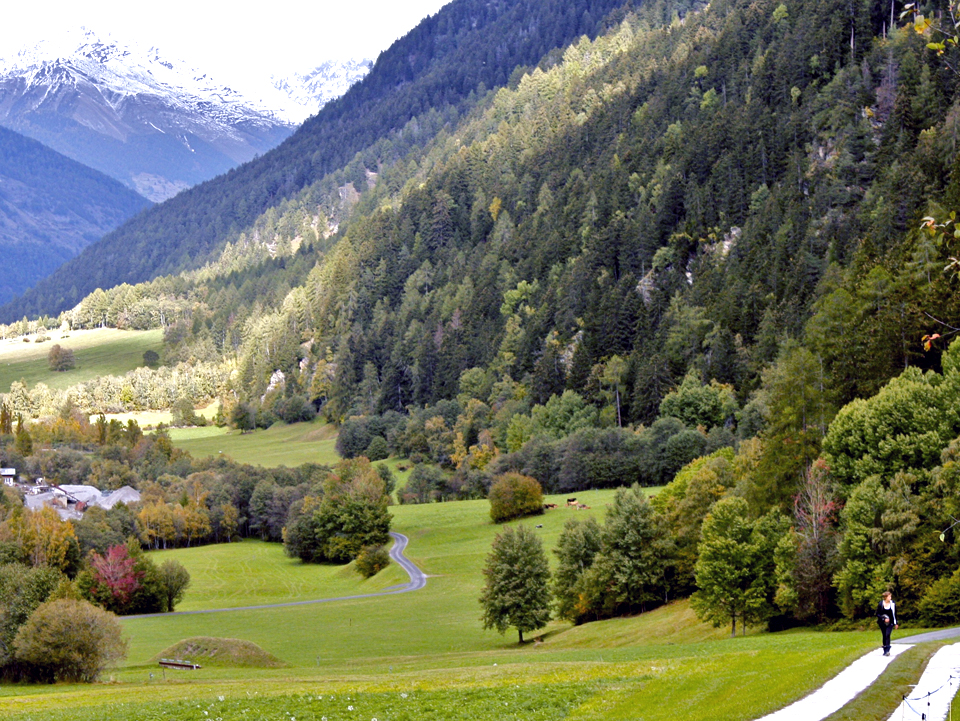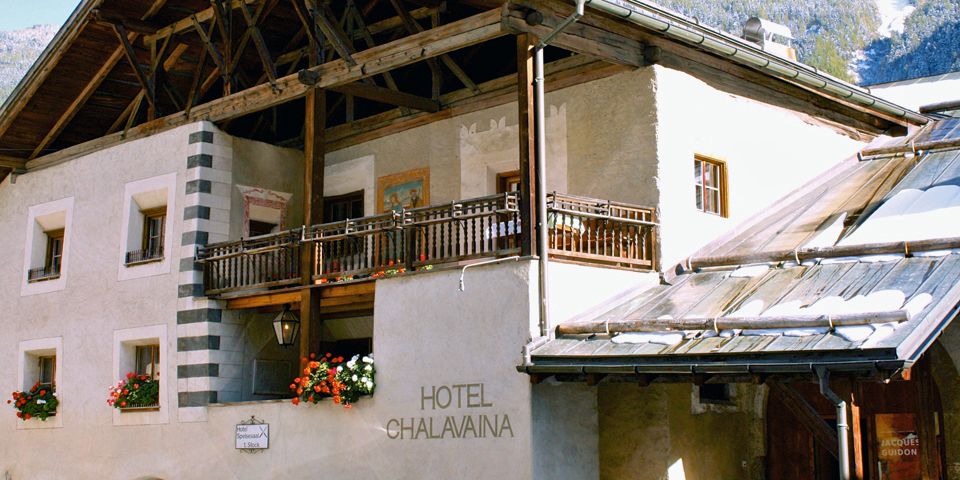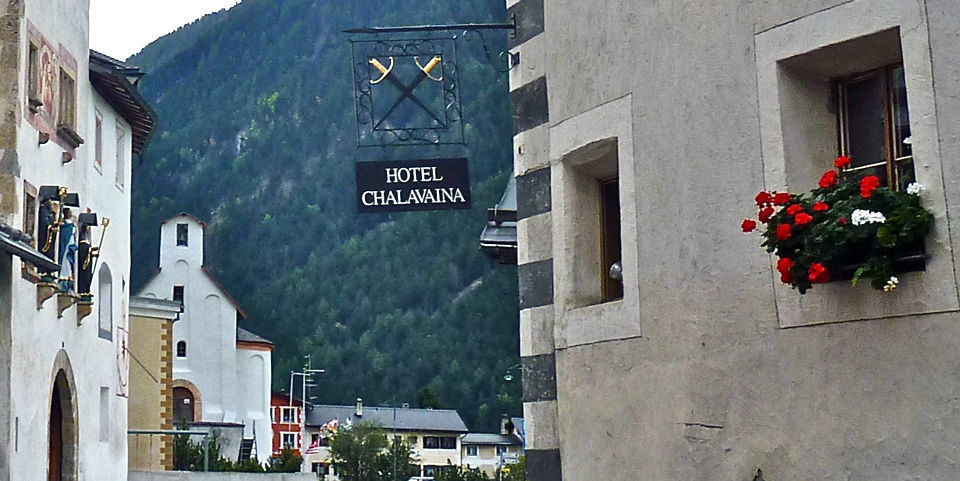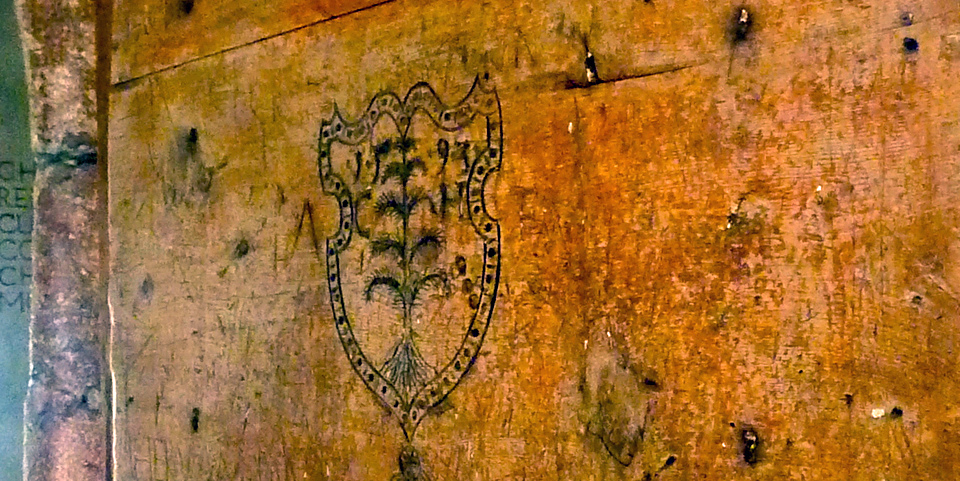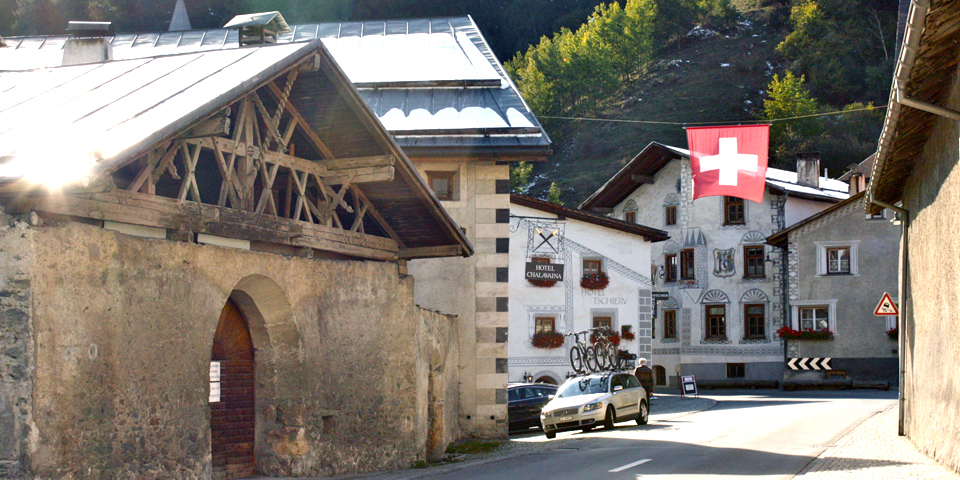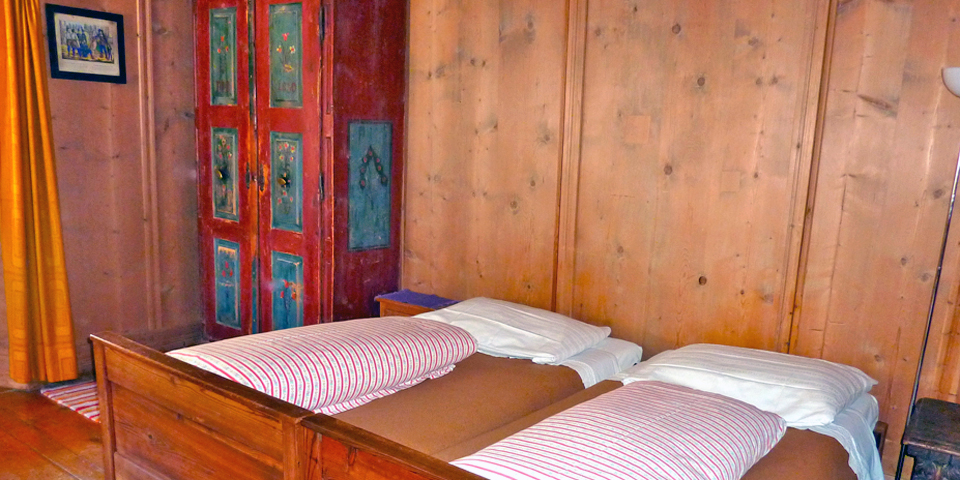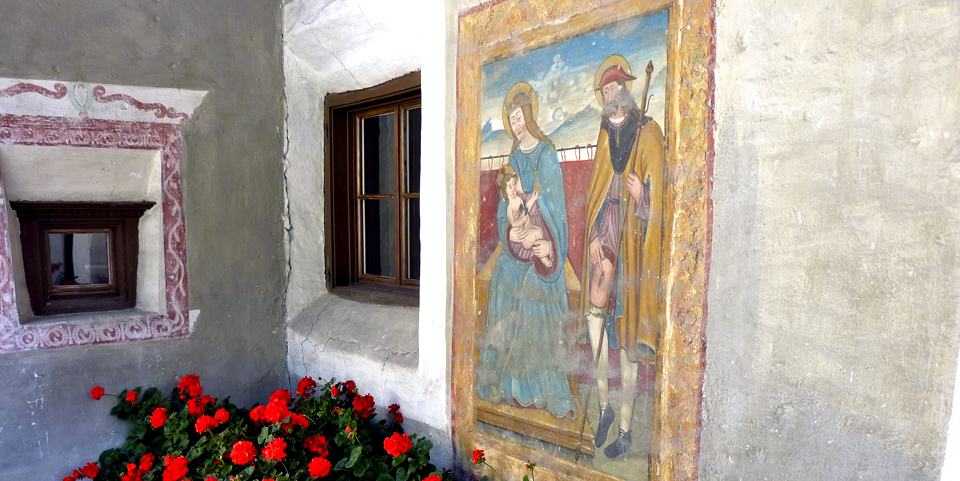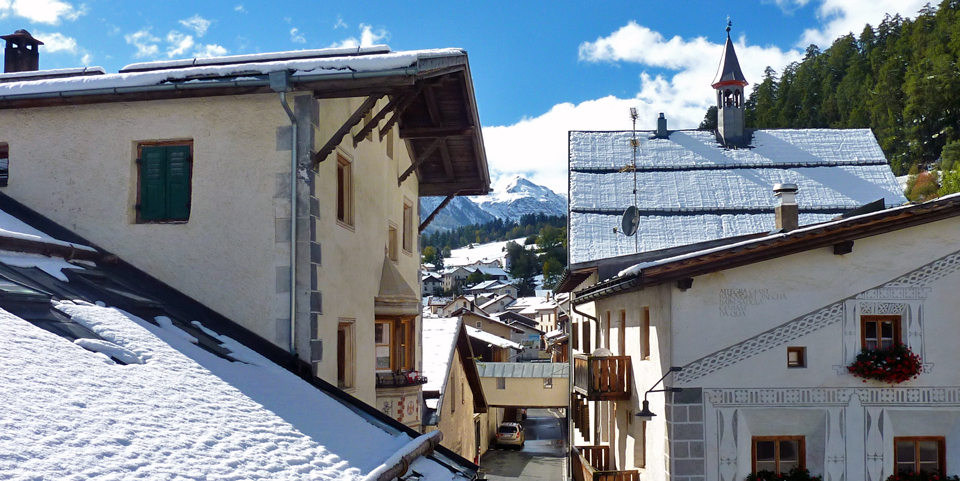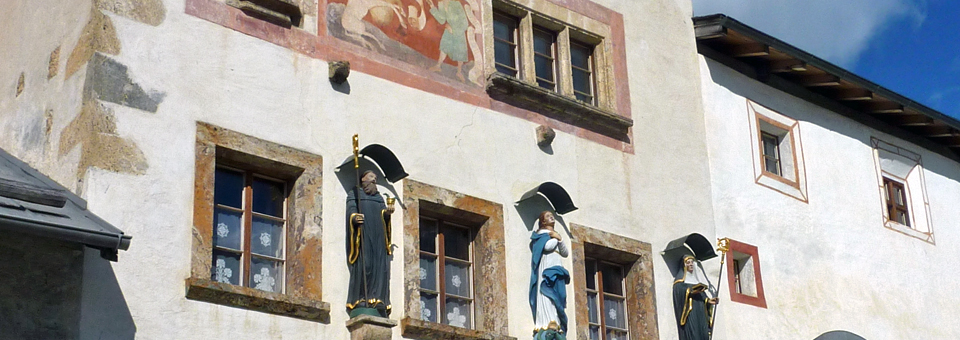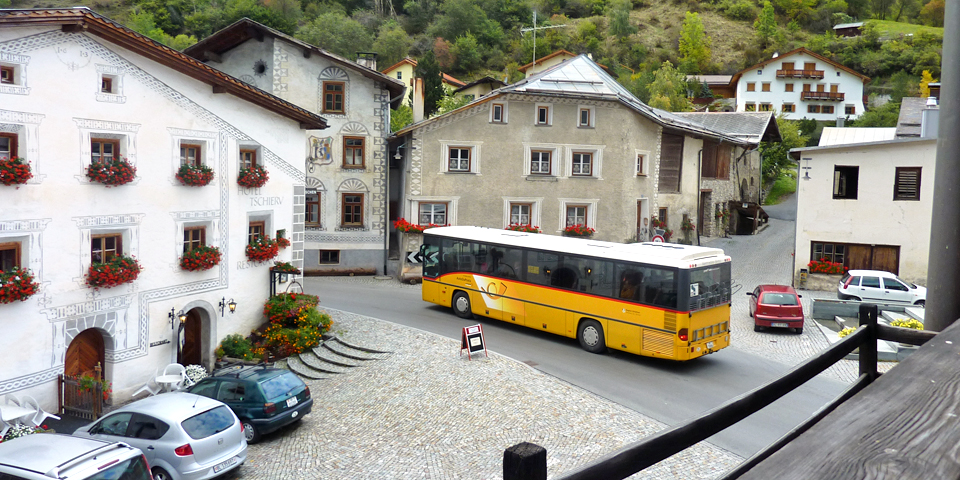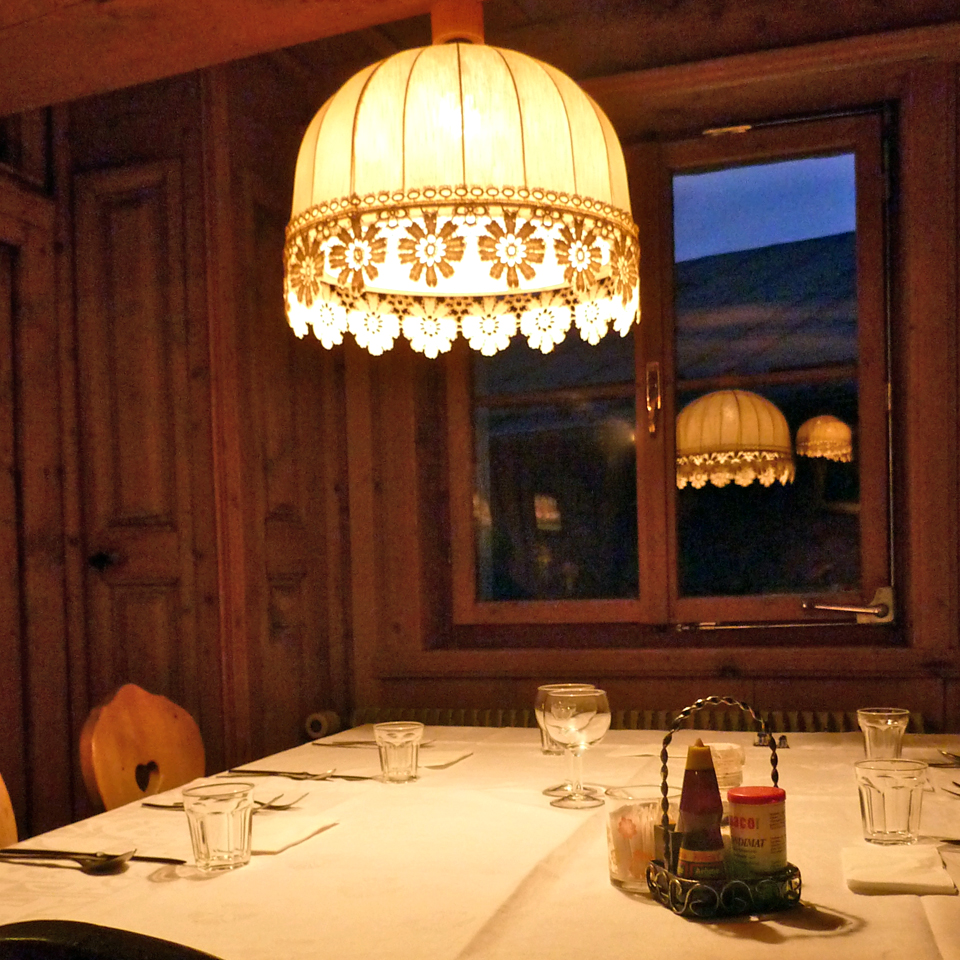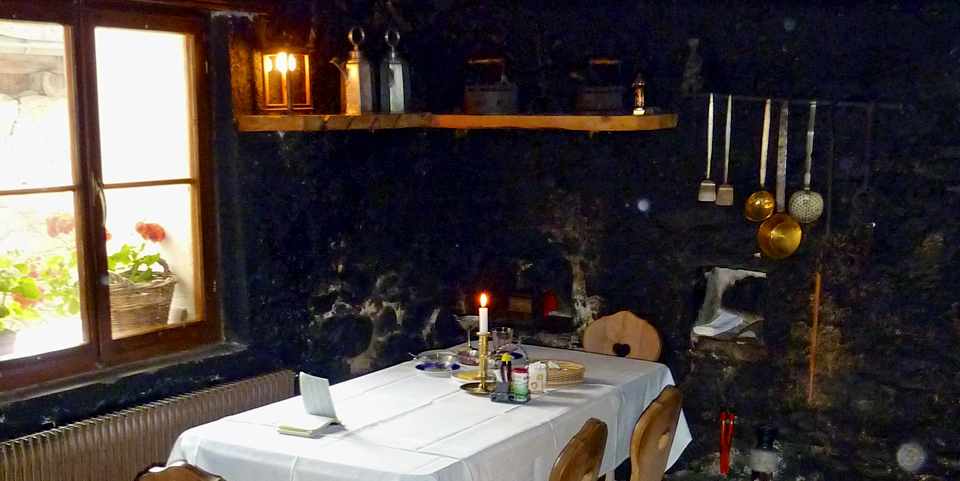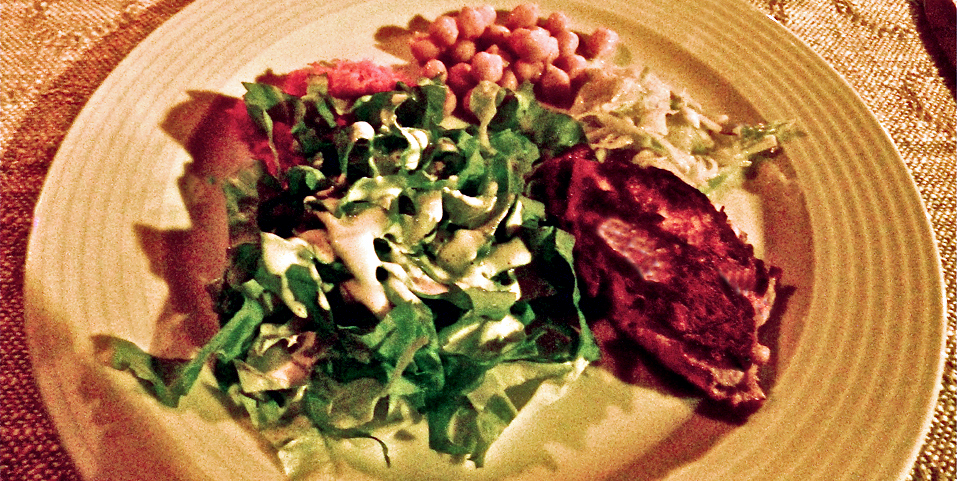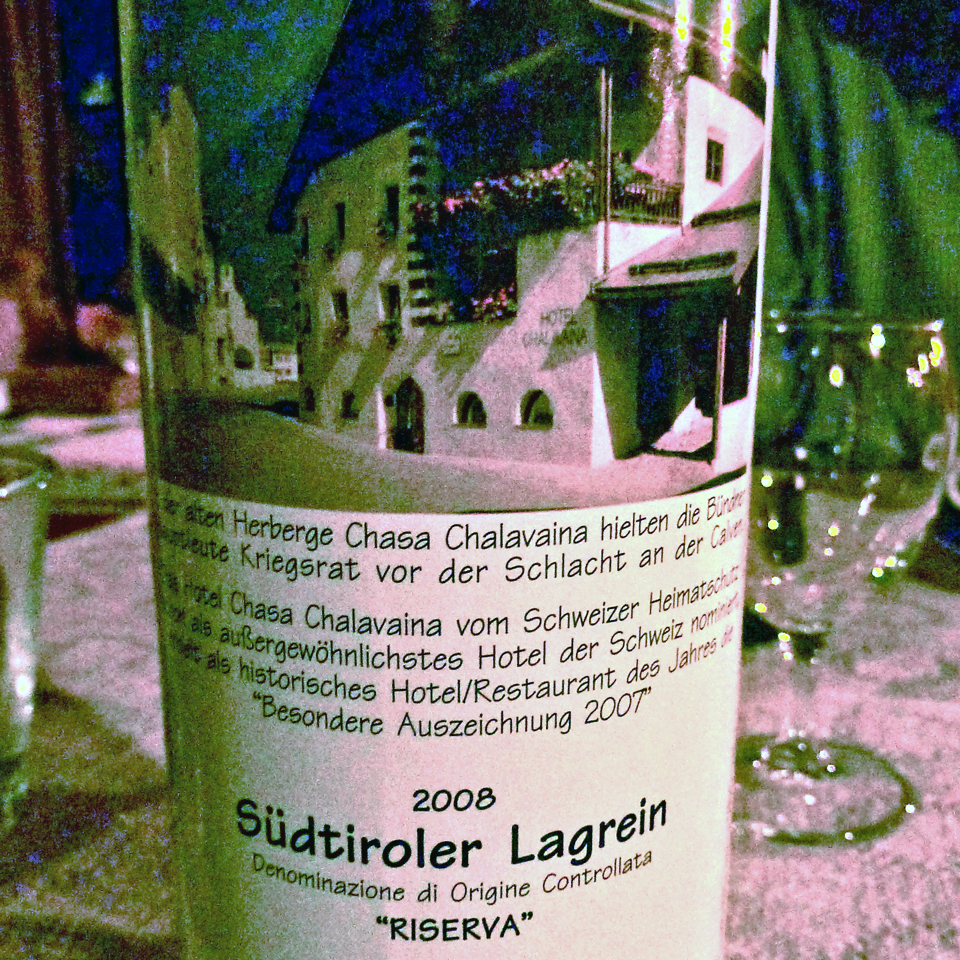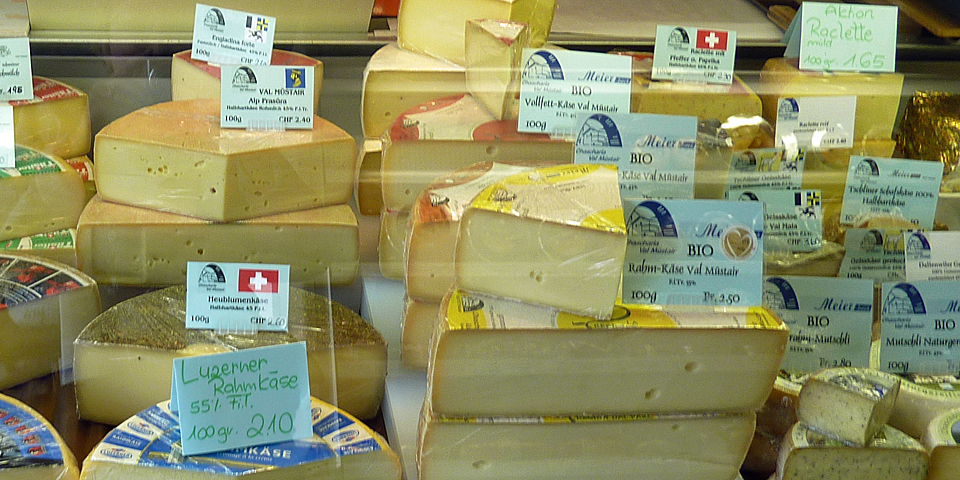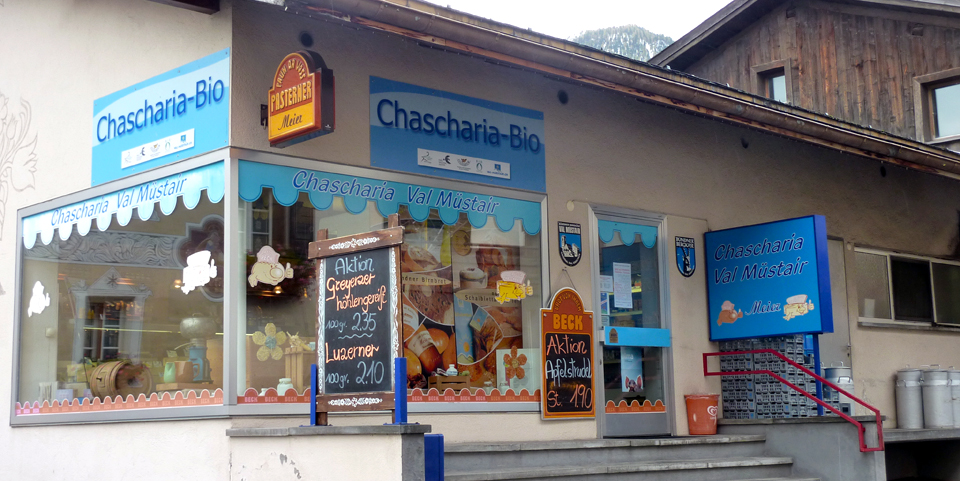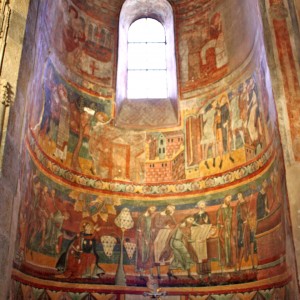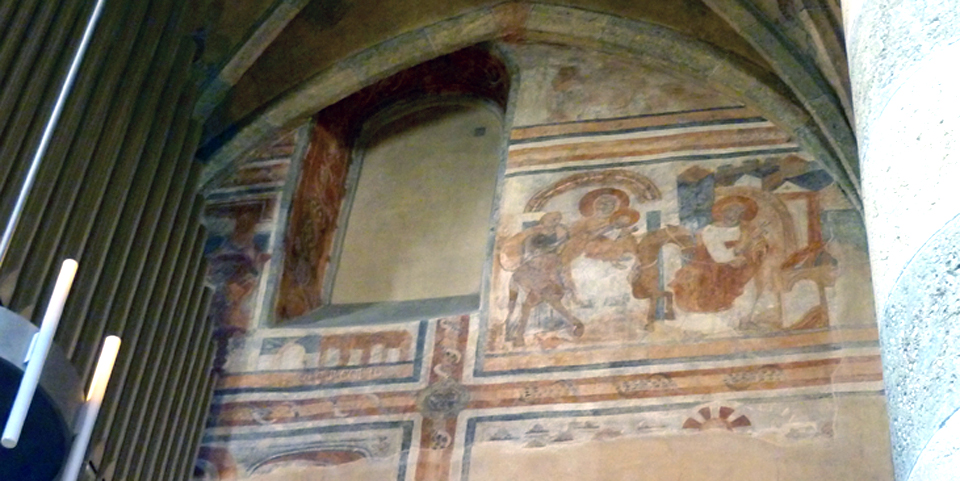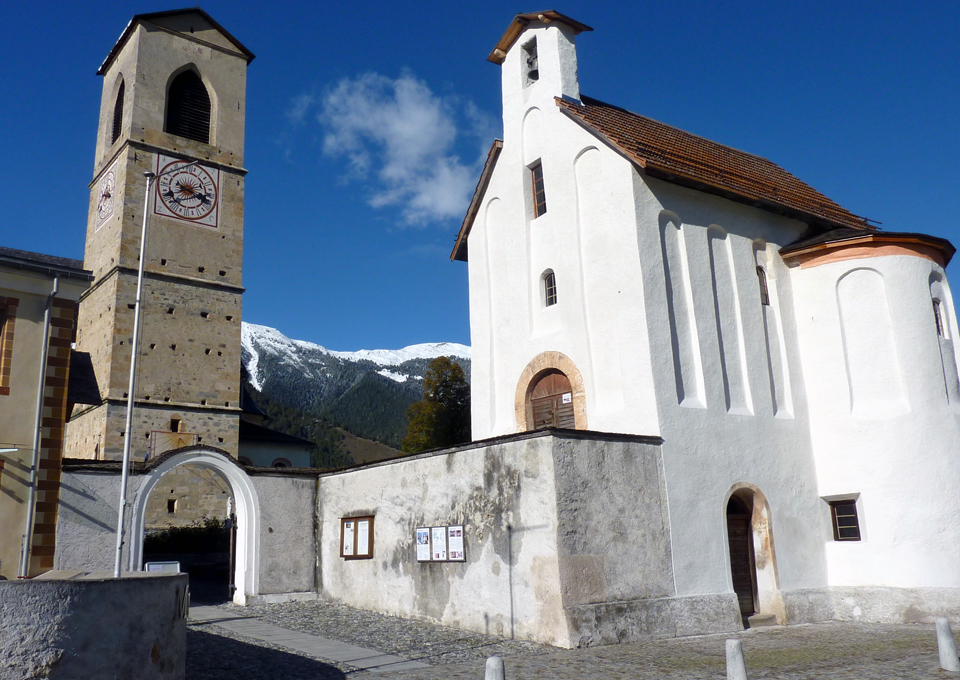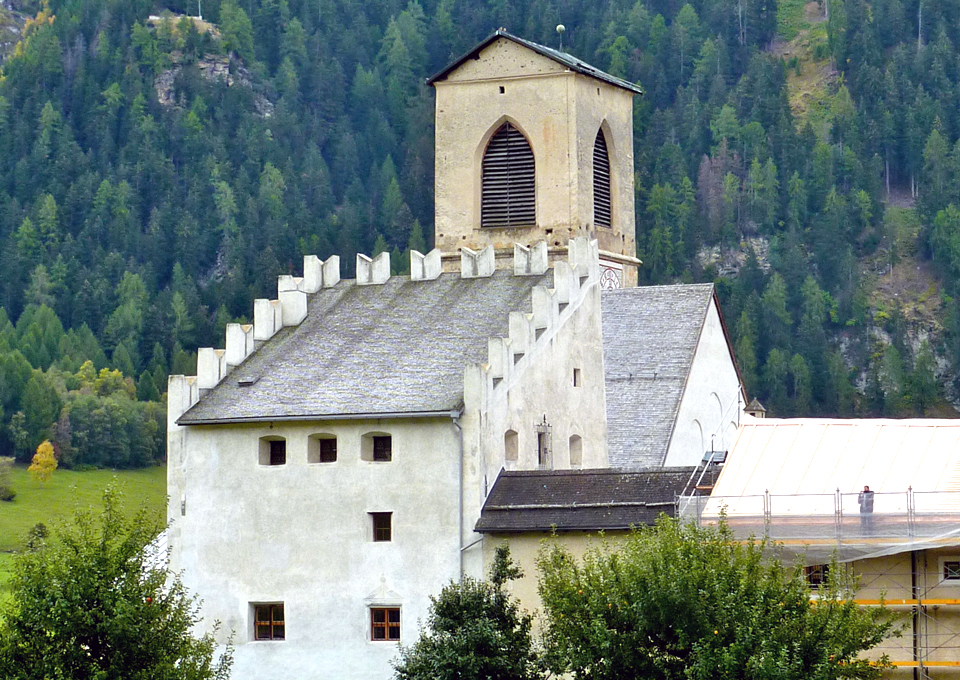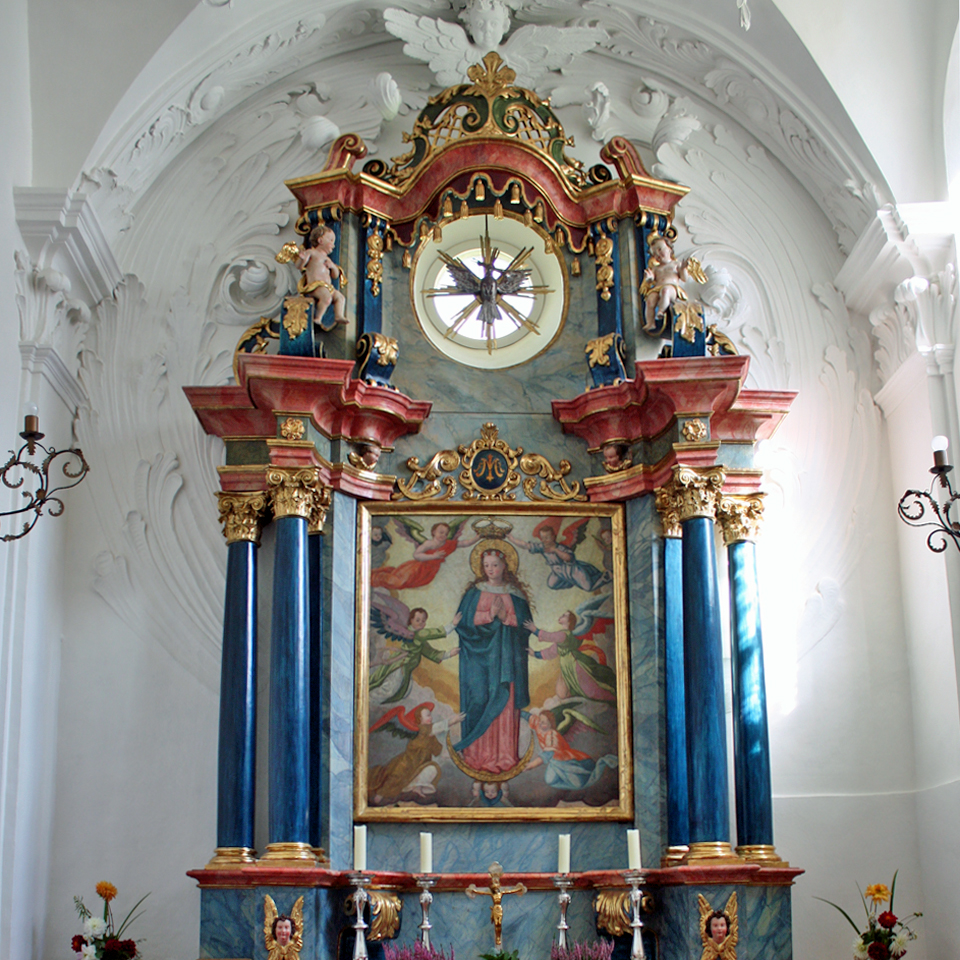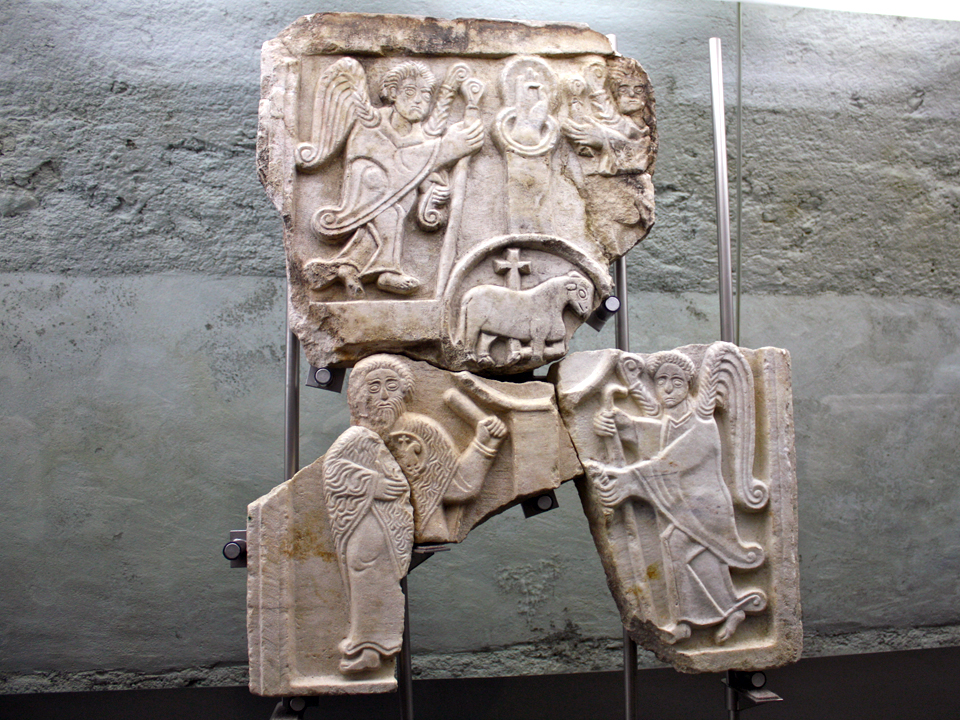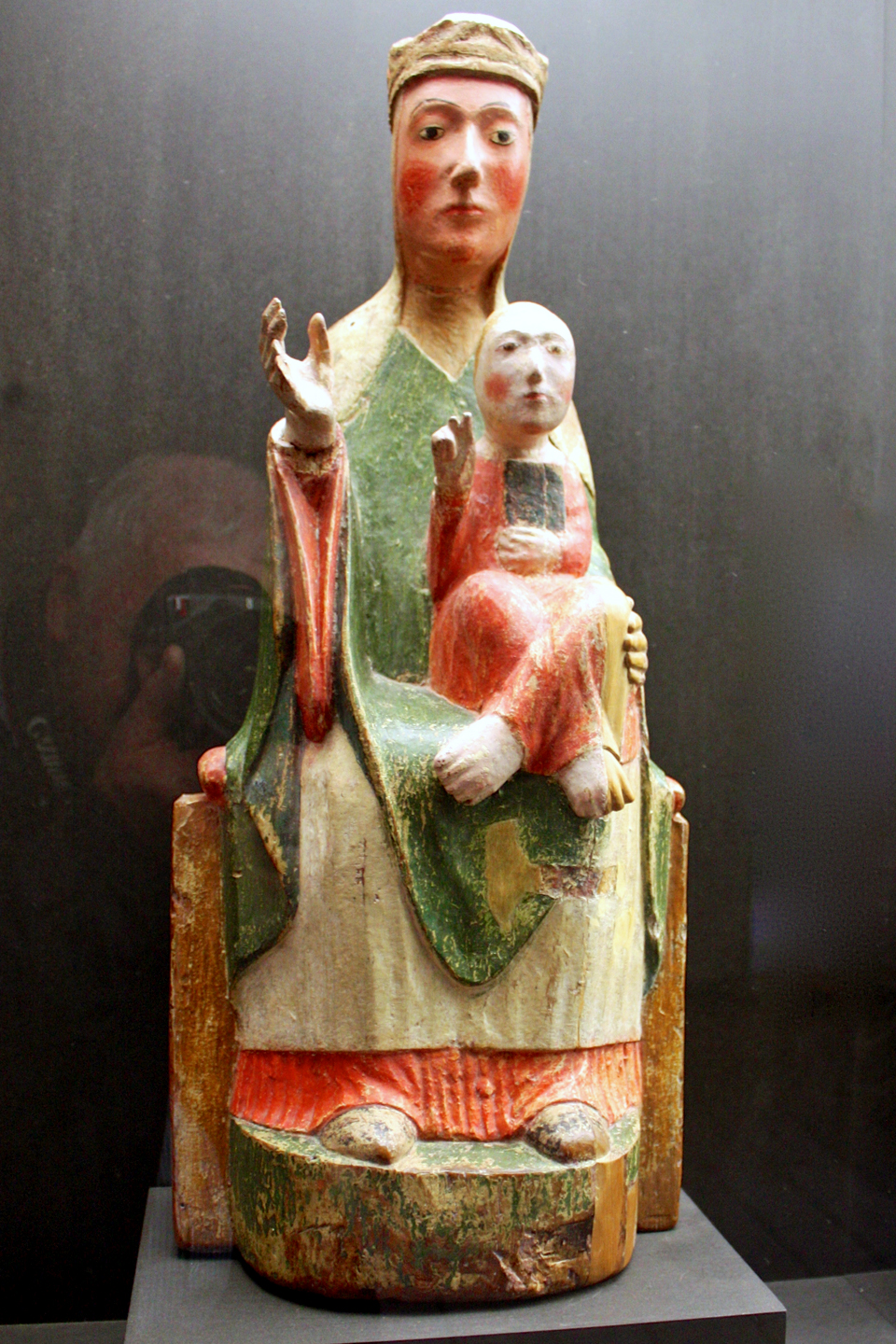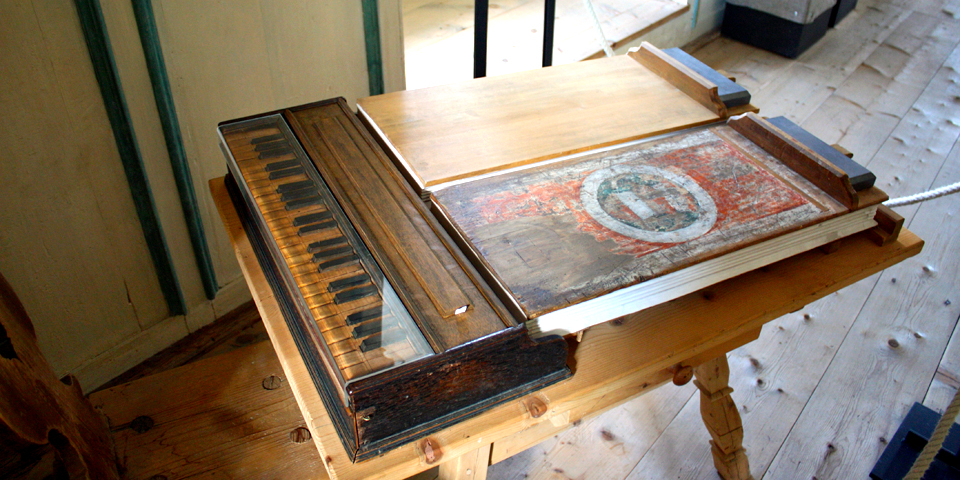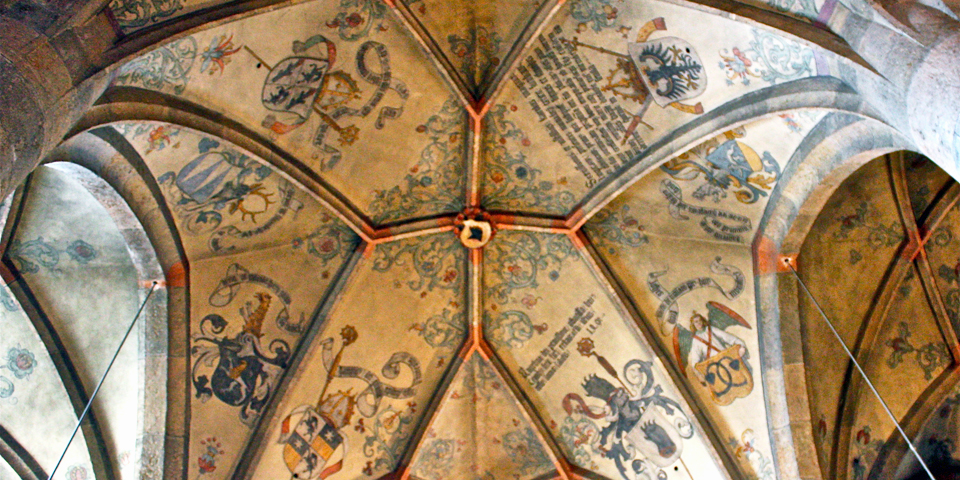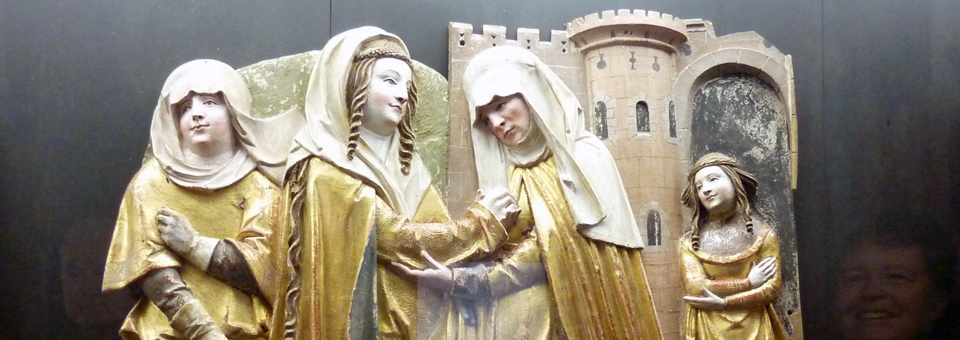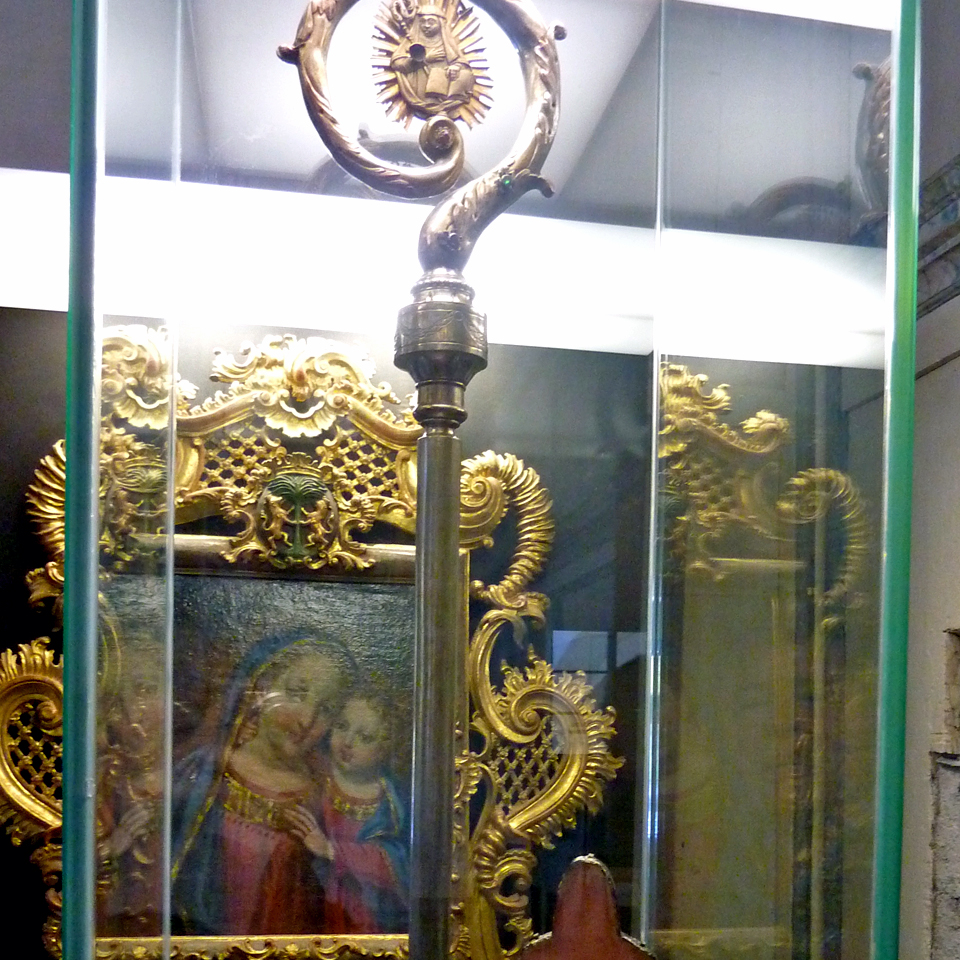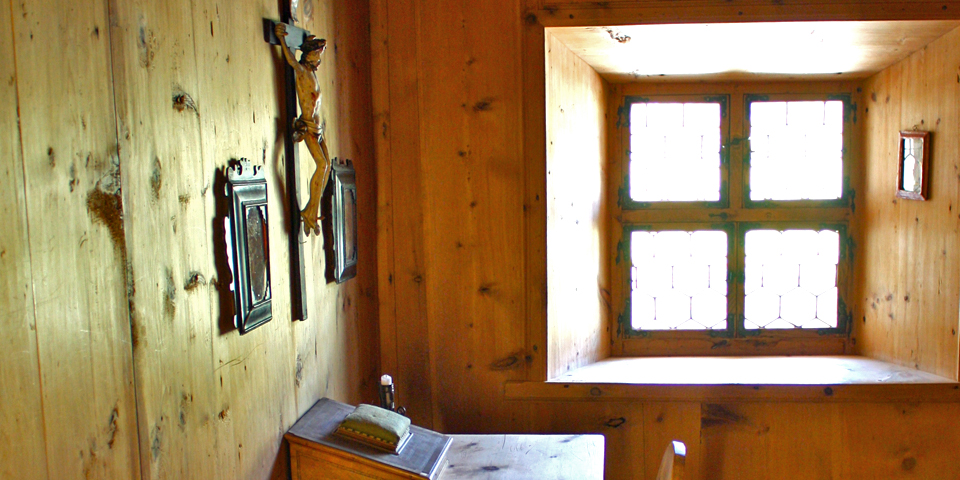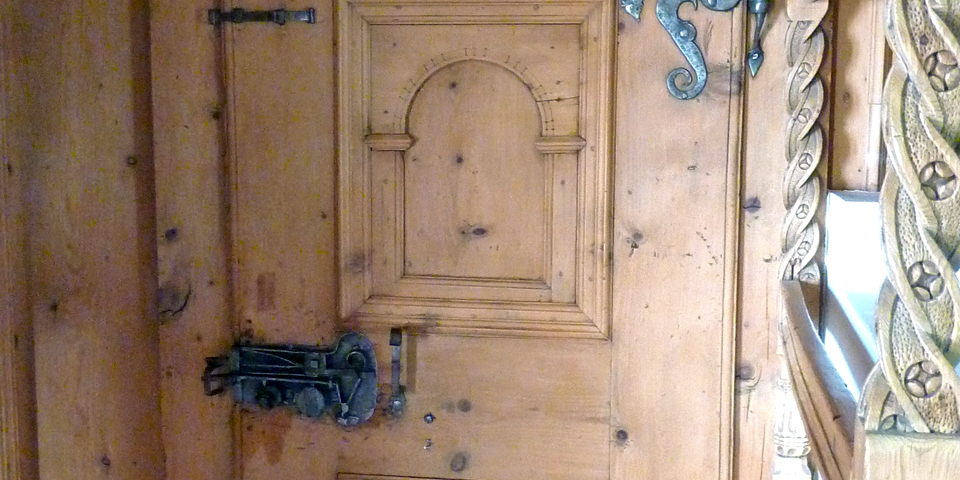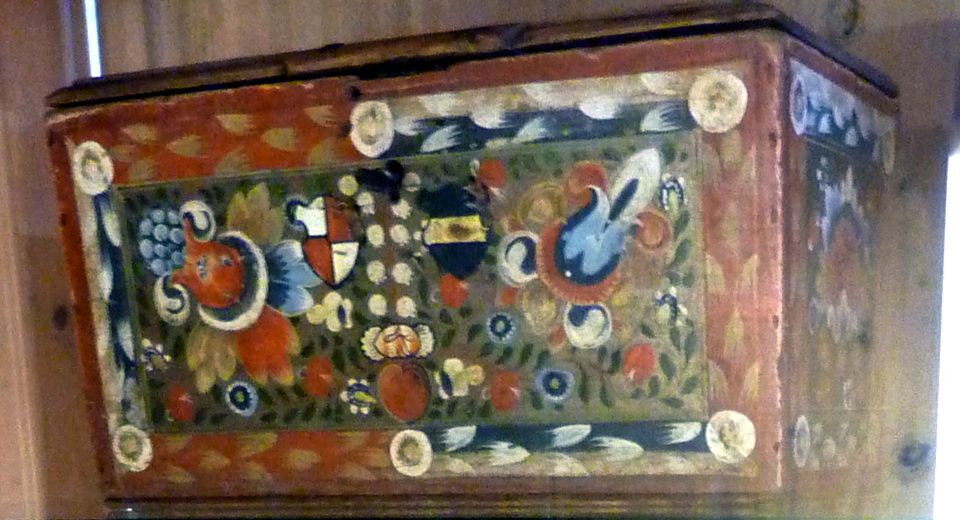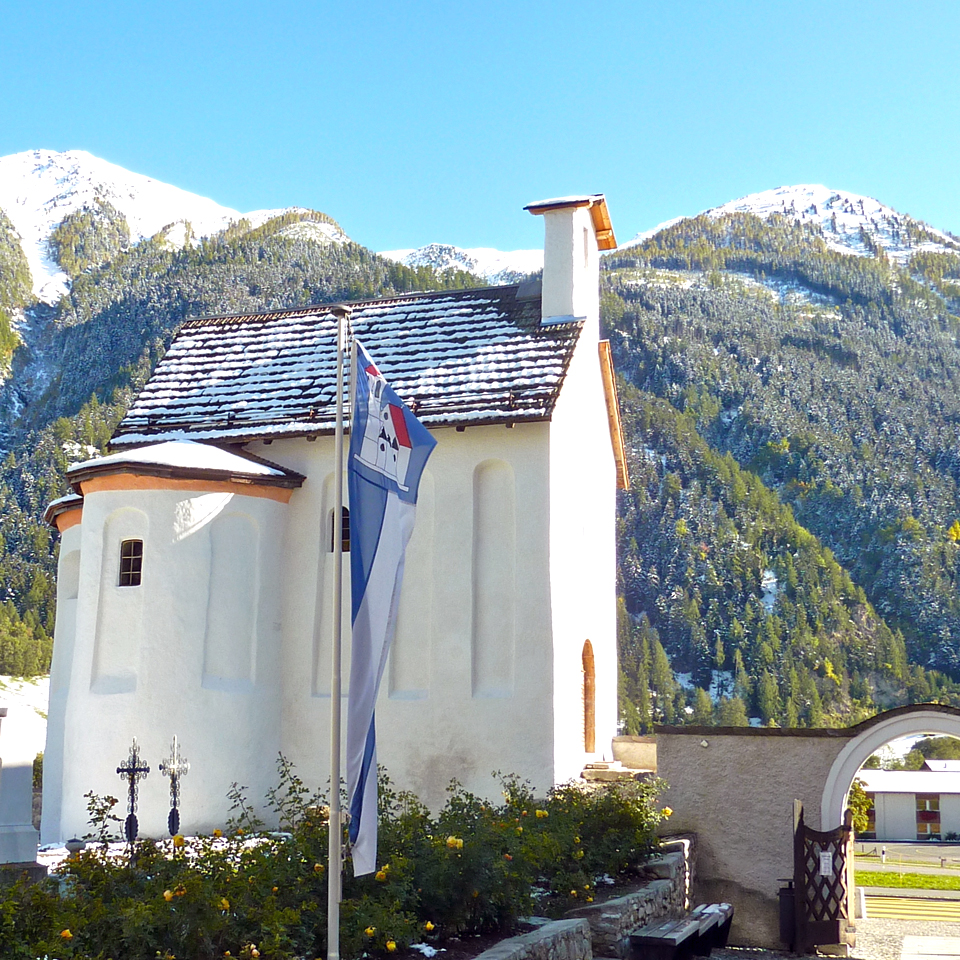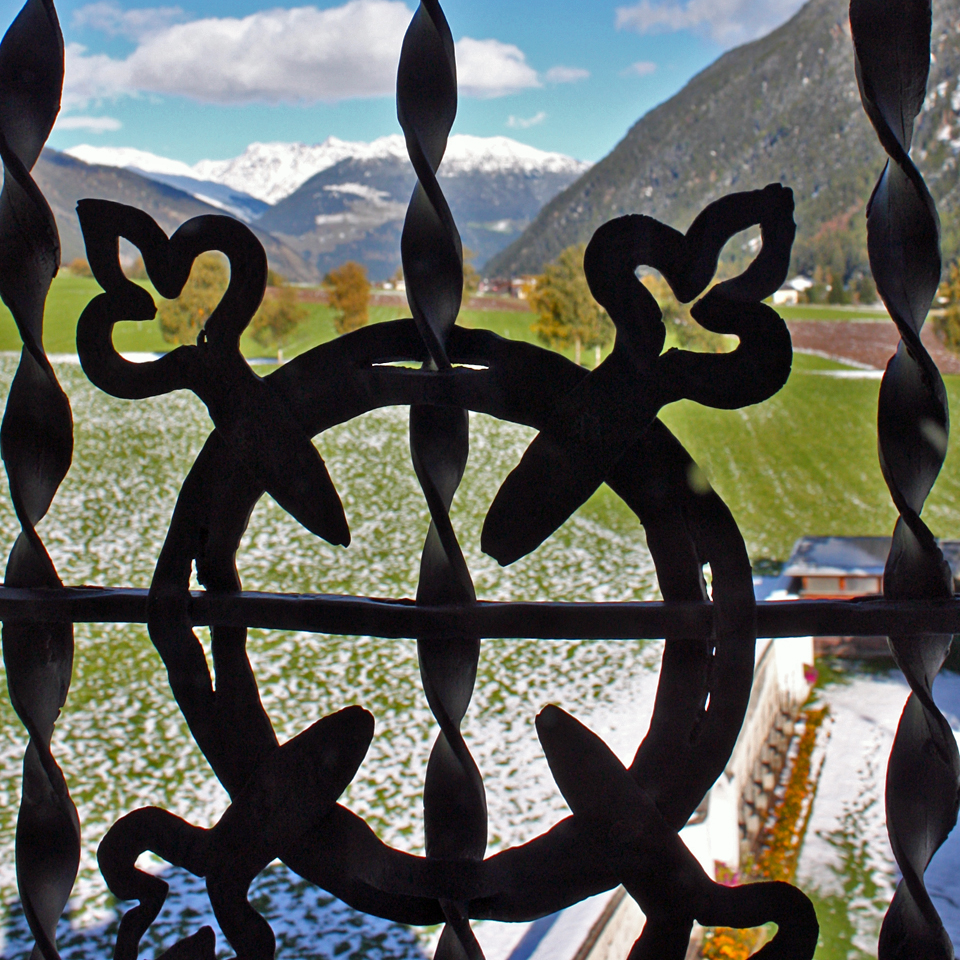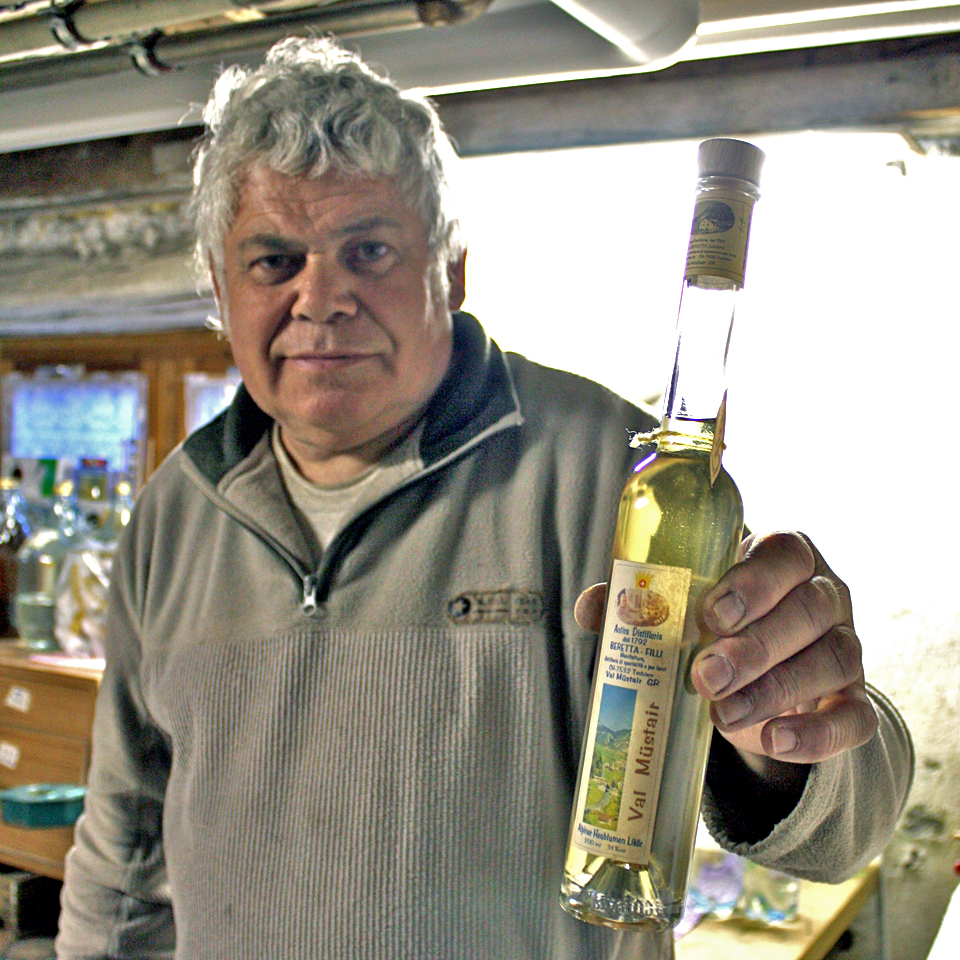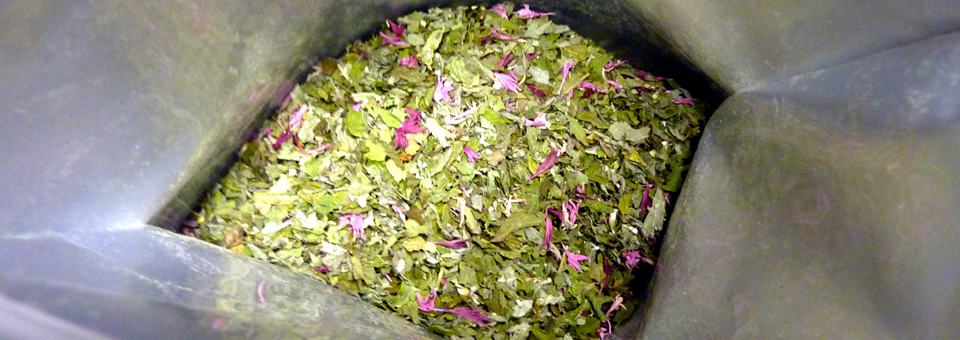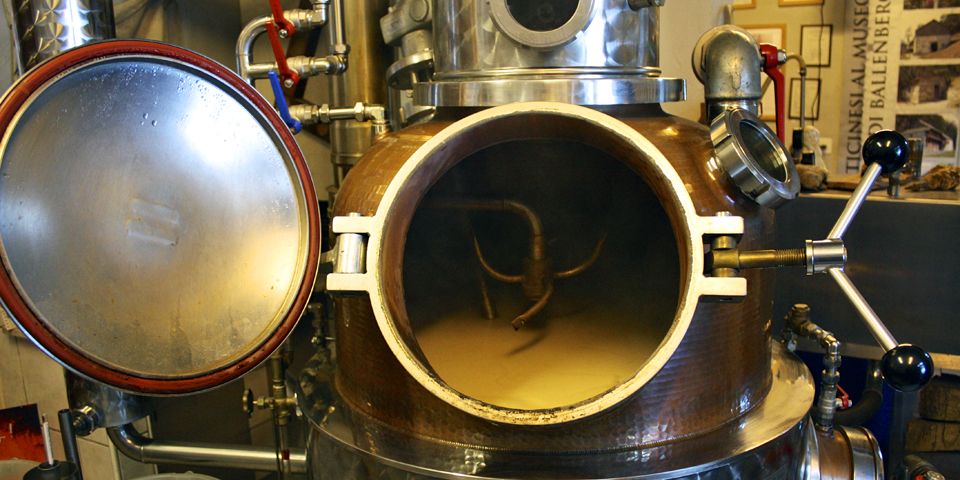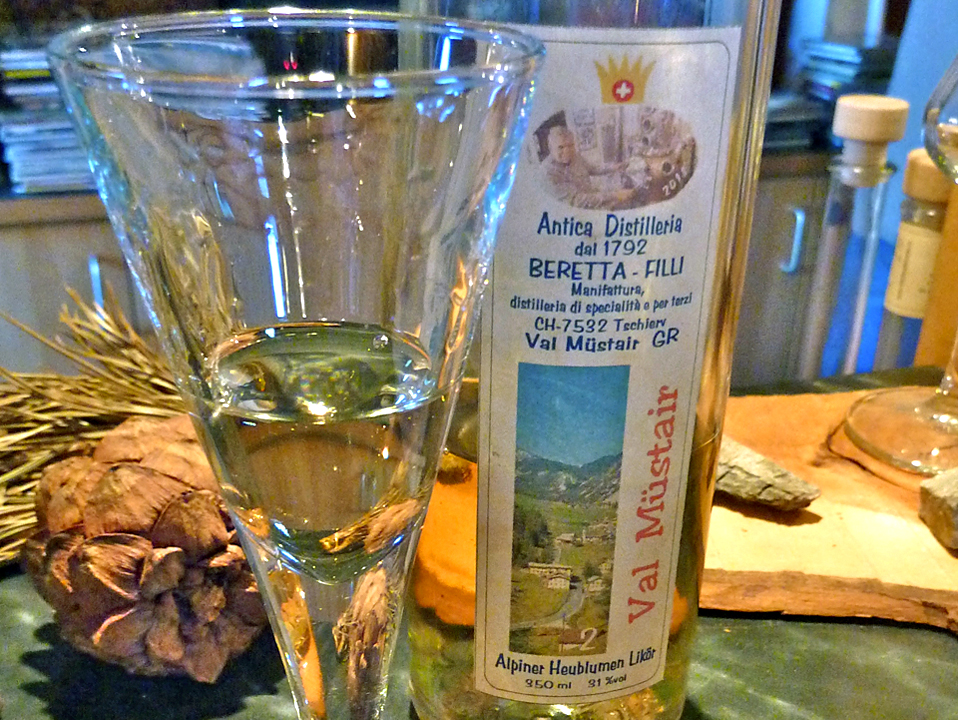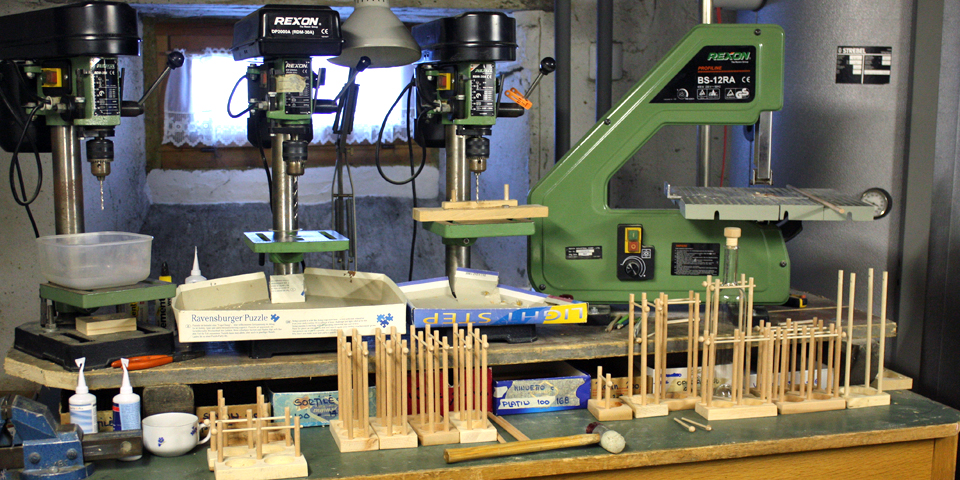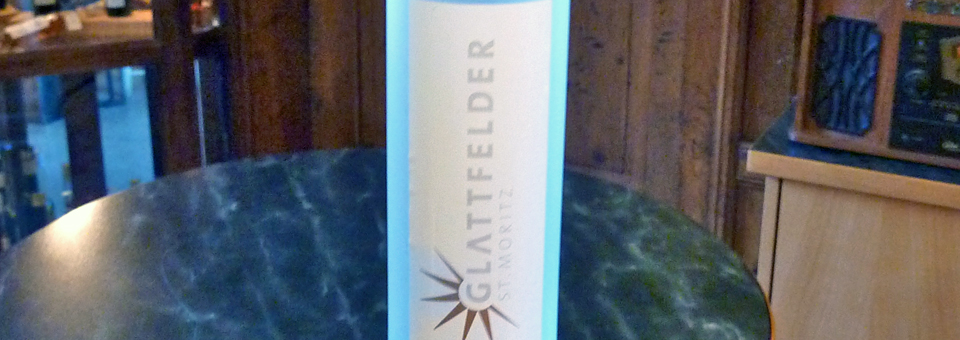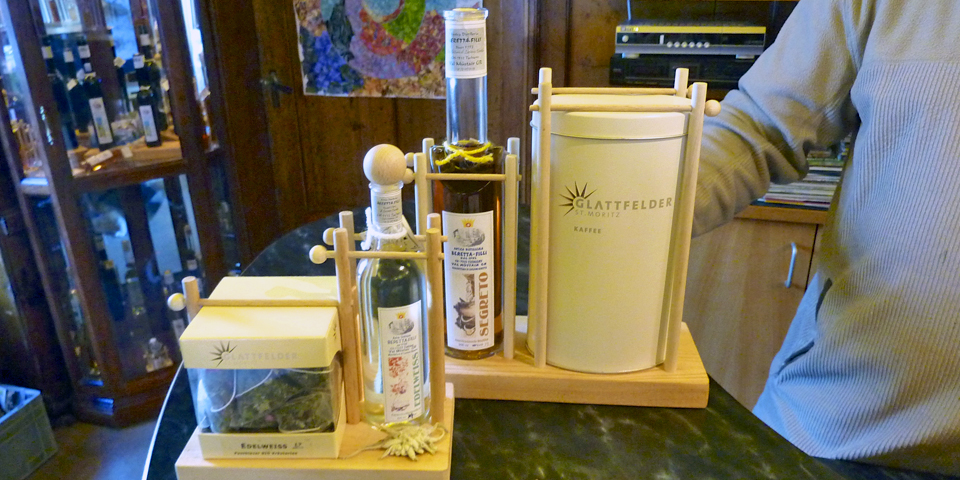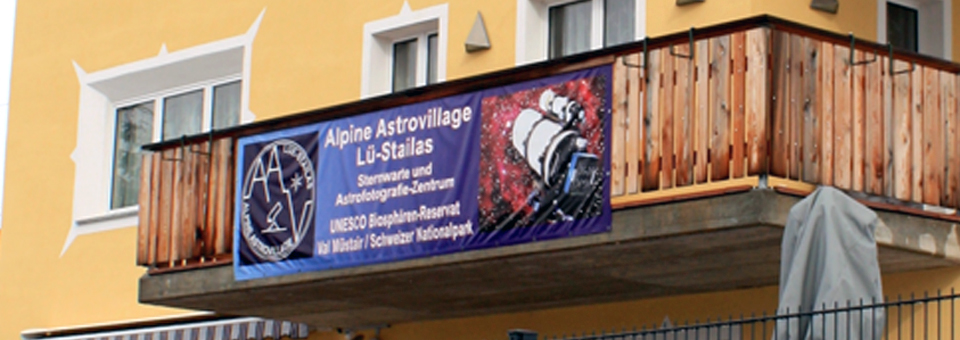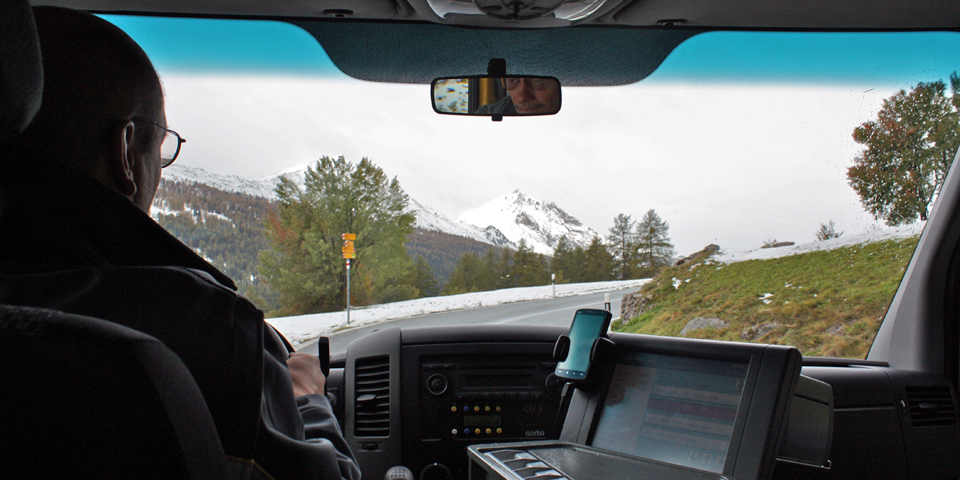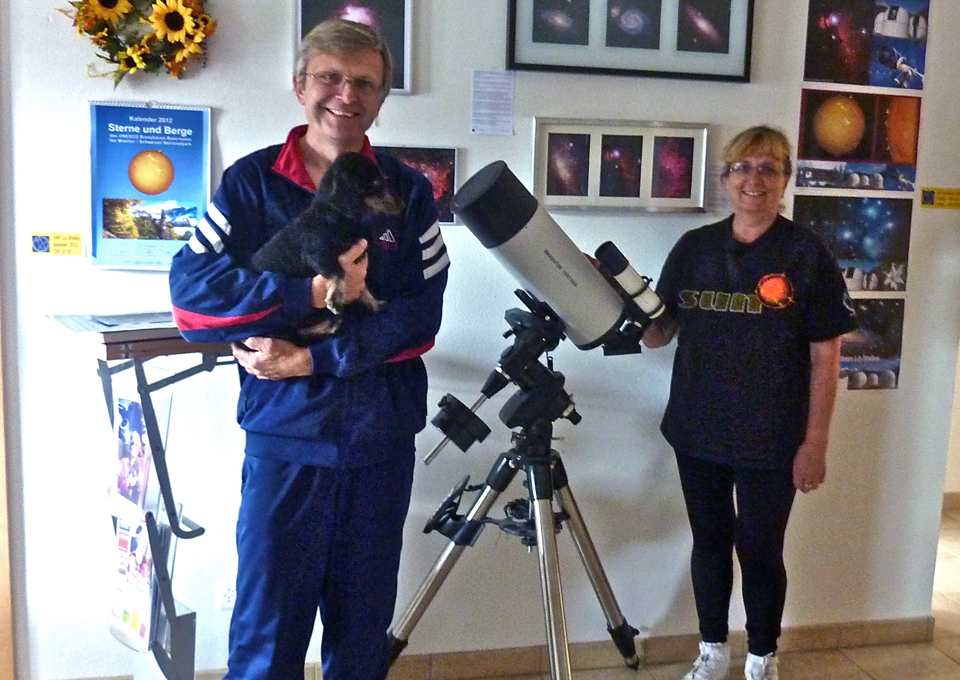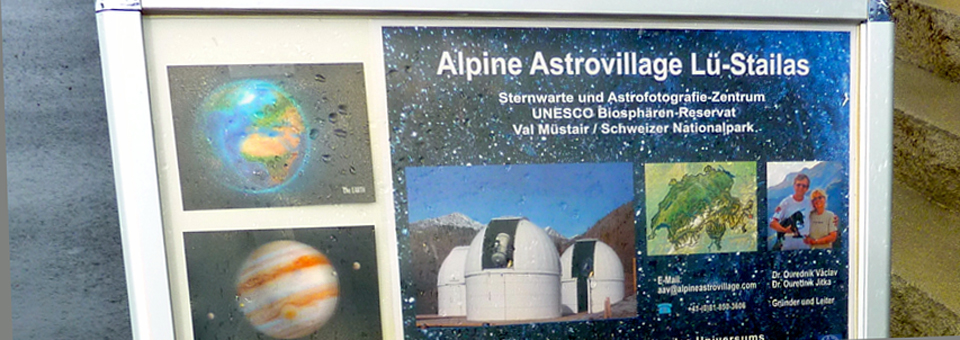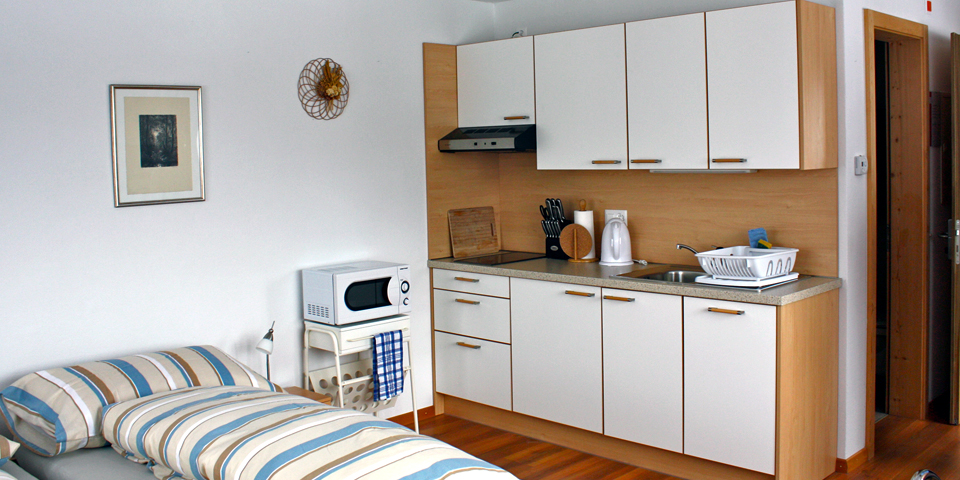Viva la Grischa! : Allegra im Val Müstair, Switzerland!
The eastern Alps isolate Graubünden, the largest, easternmost, and most sparsely populated of Switzerland’s twenty-six cantons. This area is renowned for its respect for tradition and its independent spirit. Graubünden did not join the Swiss Confederation until 1803.
The growth of Graubünden’s tourist resorts like St. Moritz, Davos, and Kloster led to the development of modern-day roads, railways, and communication. However, in more remote mountain villages and hamlets, the language left behind by Roman conquerers lives on. That language is called Romansh and each region has its own dialect.
To get there, we took the Rhätische Bahn railway to the end of the line at Zernez.
To enjoy unlimited travel on the Swiss Travel System including trains, buses and boats, we used our Swiss Pass, available through Rail Europe. As is typical of the Swiss transportation system, a yellow Postbus was already there, ready to take us on a spectacular journey through the alpine wilderness known as the Swiss National Park and through the Ofenpass to one of these villages in Val Müstair. The bus stopped to drop off mail, hikers and bicyclists along the way.
Snow began to fall as we made our way through the mountains, adding a dazzling sparkle to the soaring peaks around us.
Val Müstair is a region of high mountains, lush, steep-sided valleys, alpine pastures, stone pine forests, and homes decorated with Engadine-style designs known as sgraffito.
With cowbells, babbling brooks, waterfalls, and trails for enjoying it all, it’s picture-perfect Switzerland.
Our destination was the Hotel Chalavaina, a short walk from the Clostra Son Jon (Convent of St. John) bus stop. Orders for the Battle of Calven were given from the hotel’s terrace in 1499 by Benedikt Fontana, Commander of Graubünden (Grison) forces.
The two crossed swords of Hotel Chalavaina’s (Chalavaina is Romansch for Calven) sign proudly commemorate the military victory against German Emperor Maximilian and the Austrian Hapsburgs that led to Swiss independence.
The Hotel Chalavaina’s massive Gothic archway leads to a door emblazoned centuries ago with the family crest.
The hallway is lined with medieval pole weapons known as halberds and a Fasser family tree that traces the owners’ lineage in Val Müstair to the fourteenth century.
Bricked-up light slits in the foundation indicate that the inn was built before 1300. The large stable was constructed when guests arrived with mules and horses.
Local women brought their homespun grey wool cloth known as Loden of Grisons to a market held in a room here to trade for things like salt and groceries. Merchants then sold this high quality cloth in places like Lombardy. As Mrs. Fasser, who speaks some English, told us, “This is a very special place.”
The inn has been meticulously restored and furnished with local antiques and hand-woven linens and rugs.
The fresco on the balcony wall, painted in 1497, depicts the Madonna and a plague-stricken St. Rocco.
Our view from this balcony was mountains to the left, an eighth century convent to the right, and the historic square straight ahead. The fresh mountain air was filled with the soothing sound of bells from local cows and, at prayer time, from the convent.
Meals are served in a room with walls of fragrant local pine known as arven (dschember in Romansch) and are prepared using local foods, including vegetables from the garden. Arrive early for breakfast and you may get the table in the historic kitchen.
Alpine cheese, local meats, yogurts, and freshly baked traditional rye bread were staples of breakfast. Dinner one evening included local wild boar and garden vegetables.
wild boar dinner at the Hotel Chalavaina, Val Müstair
wine at the Hotel Chalavaina, Val Müstair
Nearly all foods and farmers are organic, referred to here as biological or bio. The Swiss were known for their concern for the environment long before sustainability became a marketing buzzword. Nowhere is it more evident than in this UNESCO Biosphere reserve area.
The Spiritual
The Benedictine Convent of St. John (Clostra Son Jon), is across the street from the Hotel Chalavaina. It was built as a Benedictine monastery and since 1200 has been a nunnery. Romanesque paintings of the dance of Salome, King Herod, and head of John the Baptist are behind the altar.
About a century ago, traces of rare Carolingian art were discovered and revealed to be the world’s largest series and best preserved early medieval frescoes. In 1492 the abbess renovated the buildings and had the frescoes covered with white paint to brighten the decor. Remnants of the original frescoes were discovered above the lowered ceiling by a researcher at end of nineteenth century and were completely uncovered by 1951. The convent was named a UNESCO World Heritage site in 1983.
It is believed that the convent was founded around 800 AD by Charlemagne, who feared an avalanche while traveling through the Umbrail Pass and promised God he would found a monastery in the next place. Wood in the original building has been scientifically tested and dates to 775 AD.
A convent museum recently opened in the Planta tower, built in 960 AD by Holy Roman Emperor Otto I and the Bishop of Chur, who controlled the area. It served as protection and defense against the Saracens.
A tour includes a glimpse of a typical room for a nun…
…and the doorway to the room of the Abbess…
and painted wooden chests in which nuns would keep their only worldly possessions.
Nine guest rooms offer quiet contemplation away from the stresses of modern living. Meals are served in the convent dining room. Participation in meditation and prayer in the chapel is optional. Guided fasting weeks are offered throughout the year.
The Spirits
There were many secrets Luciano Beretta shared with us through a translator when we visited his distillery, Antica Distilleria Beretta, in the nearby village of Tschierv. Mr. Beretta has won twenty gold medals for his products, which are made entirely from ingredients found in the valley. “Nature gives me everything I need,” he said, “and there is no waste. Everything goes back to nature.”
His wife’s family has owned rights to produce special liqueurs since 1792. They are the only ones in Graubünden with this privilege.
The first secret is the grain, high quality Gran Alpin from the convent that he preheats to retain aroma and flavor. The lower high-altitude boiling point for his clear distillate base prevents the alcohol from burning off and, he says, is the secret to his gold medals.
The color comes from the flavorings he adds — things like pine cones, nuts, apples, and flowers such as edelweiss and hayflowers are collected at altitudes above the cow pastures to ensure a clean product. He also makes the labels and wooden stands.
Mr. Beretta’s Alpiner Heublumen Likör, a hayflower flavored liqueur, was awarded 20 points–a perfect score. He distributes 1100 bottles annually to Scuol and St. Moritz, where gourmet chocolates flavored with his Gran Alpin distillate are also sold. High-end distributor Glattfelder sells his Gran Alpin in a distinctive 500 ML translucent bottle at Badrutt’s Palace for over CHF 200, over $200.
Group tastings and opportunities to see the production are offered, as are meals of local fare, all with advance reservations.
Which is Luciano Beretta’s favorite? We don’t know. He doesn’t drink.
The Celestial
We learned that two astronomers had an observatory nearby called Alpine Astrovillage Lü-Stailas that offered night sky observations and astrophotography using high-end astronomical equipment. The founders, neuroscientists Dr. Vaclav Ourednik and Dr. Jitka Ourednik, did brain research on neurodegenerative diseases at Harvard, so were fluent in English, and are, like our son-in-law, originally from Prague.
We took the Postbus from Müstair to Fuldera, where we waited for the little local bus up to the tiny village of Lü so we could meet them.
The Ouredniks offer weekly and weekend programs for amateur and semiprofessional groups and individuals. There are introductory courses in visual and dSLR astrophotography for beginners or advanced photographers, student projects, customized private projects, and public stargazing evenings. It is all part of their public outreach to show the importance of keeping nights dark, reading the night sky, and learning what can be done with a digital camera.
Few sites in the world fit their geographic and meteorological needs. They chose this site, elevation 6,400′, in the UNESCO biosphere zone for its dry microclimate and transparent atmosphere away from light pollution.
Why would two people take on so enormous and risky a project? It was another atmosphere–the one they experienced in the United States that they credit with encouraging them to realize their dreams and to try new things regardless of age, sex, or religion.
Since their program participants work at night and process data by day, they built five well-appointed one- or two-room apartments with fully equipped kitchens and breathtaking mountain views. They will also rent to nature lovers, who come here to explore the trails. Half-board is available to course participants, and there are both computer and fitness rooms.
The sublime
Val Müstair, Switzerland is a microcosm of nature at its best and the heavenly. A visit there will take you back in time and to realms yet to be explored. It is an experience that is simply sublime.

